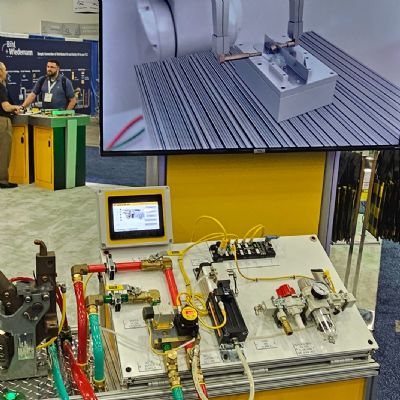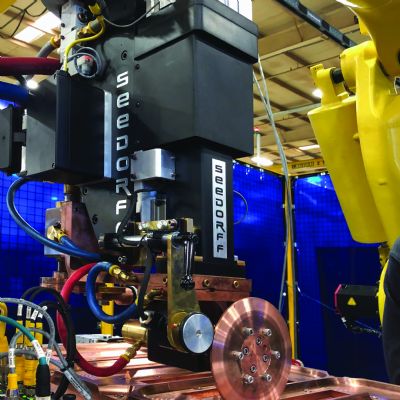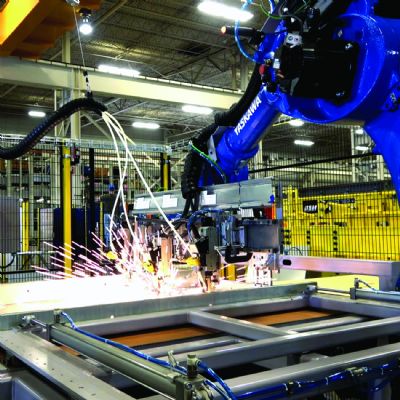“So, one of the biggest issues is convincing managers that resistance welding works,” Morgan continues. We had a customer, for example, fabricating reversing valves for heat pumps, as well as valves for automotive applications. When they faced challenges with their RW machine, rather than try to address the problem, it instead decided to implement fusion welding at a much higher cost, and with lower productivity.”
T. J. Snow service engineer Ray Michelena adds, “I recently visited an OEM appliance manufacturer that had just built a multimillion-dollar production line to laser-weld oven cavities and were struggling to get it working. Why? Because for laser welding the parts must be dimensionally perfect to achieve a nice, tight weld joint. Struggling to achieve that dimensional perfection, they instead redesigned the process to perform part of the welding with the laser and then finish with resistance welding.”
Handling Variable Part Fitup
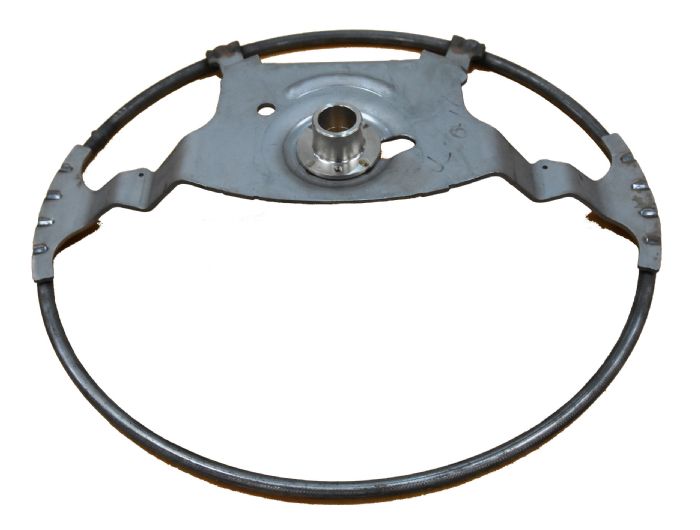 Michelena and Morgan are quick to acknowledge the numerous advantages offered by RW—for the right applications and materials—compared to other joining technologies, including fusion welding and mechanical fastening, including the ability to adapt the process for wider fitup tolerances. In some cases, for example, fabricators can use the force of the RW electrodes to close an out-of-tolerance gap in the parts being welded. Michelena offers another example:
Michelena and Morgan are quick to acknowledge the numerous advantages offered by RW—for the right applications and materials—compared to other joining technologies, including fusion welding and mechanical fastening, including the ability to adapt the process for wider fitup tolerances. In some cases, for example, fabricators can use the force of the RW electrodes to close an out-of-tolerance gap in the parts being welded. Michelena offers another example:
“We worked with a fabricator of overhead-lighting fixtures,” he recalls, “where they were trying to laser-weld the end caps to the structure. And, again, fitup was a challenge, and parts were warping from the heat of the fusion welding process. They eventually gave up after investing a lot of time and money into process development and into the fixturing to make it work, and eventually went with resistance welding.”
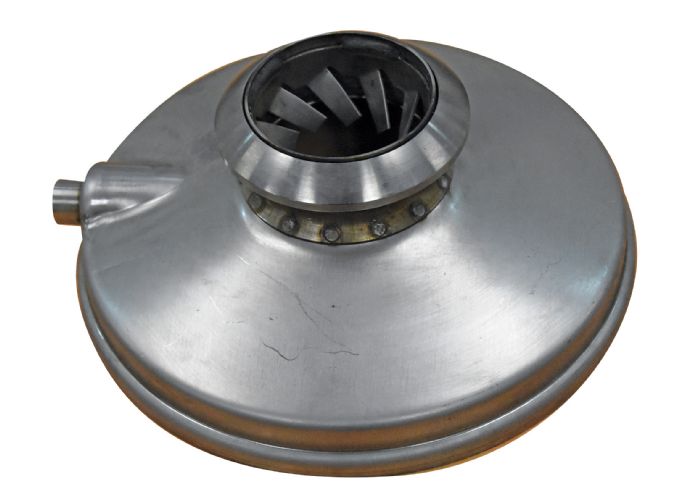 Avoiding the warping of sheet metal parts from the heat of fusion welding is just one of the benefits of RW compared to fusion welding noted in the Stanley book. Among others:
Avoiding the warping of sheet metal parts from the heat of fusion welding is just one of the benefits of RW compared to fusion welding noted in the Stanley book. Among others:
- Less skill required
- Tremendously higher production rate
- Products welded with the RW process are more uniform; they can be produced semiautomatically; and are least subject to the effect of the ever-present “human element.”
“Many additional advantages are obtained through the use of resistance welding in addition to reduction in cost and smaller man-power requirements,” the book adds. “Some of these extraordinary advantages are in improvement of product, better appearance, greater strength, more efficiency in production, lighter weight and easier fabrication.”
“If you consider uptime and throughput in an automotive plant,” Morgan explains, “most of the downtime is somehow related to welding. So, the welding process must be stable, well-understood and readily taught to everyone. We can teach anyone how to make a resistance weld; that’s not true of other processes.”
Working Between the Sheets
“I like to say that all of our work is done between the sheets,” Michelena adds. “When the weld is formed, it’s between the material, whereas arc welds are surface welds on the outside of the material; the welds are formed completely differently. Arc welding requires a lot more—how you position the torch, how fast you move the arc, etc. RW is fast, economical and repeatable.”
Michelena has several examples where manufacturers replaced arc welds with resistance welds. Most recently, he says, he taught an RW class at a company outfitting vans with accessories to make them handicapped-accessible.
“The company performs a lot of arc welding,” he says. “In one application, welders assemble cage nuts inside of a bracket, welding the nuts to flanges. Among their concerns were heat input to the nuts, consistency of weld penetration and overall weld quality. I showed them how they could join the nuts easily and quickly to the flanges with one spot weld on each side of the nut. The firm ultimately invested in new RW equipment, with a dramatic improvement in quality and productivity.
“Education is what we’re up against,” continues Michelena—"process knowledge and its capabilities. That’s why we recently produced a series of short YouTube videos on various RW-related subjects (www.youtube.com/Tjsnowco). And, we’re also working to keep up with the new alloys coming out; there’s a lot to learn when, for example, it comes to projection welding nuts to newer advanced high-strength steels and hot-stamped grades. Welding vastly dissimilar alloys is difficult.”
Can We Please Get Some High-Strength-Steel Nuts?
So difficult, in fact, that Michelena and Morgan wonder that because the properties of the nuts being specified by automotive engineers vary so vastly from the sheet steels they’re being fastened to, perhaps fastener suppliers should consider manufacturing nuts from newer high-strength steels.
Along those lines, I asked for comment from the Industrial Fasteners Institute (IFI), which shares an office with the Precision Metalforming Association. This from IFI’s director of engineering and technology Salim Brahimi, P.Eng., Ph.D.:
T.J. Snow recently debuted a new online, comprehensive training course specifically for machine operators, a 2-3-hr. introduction to the process and covering:
“Standards for nuts (and bolts) as a rule do not dictate any specific grade of steel, they instead specify broad ranges for carbon and limits of contaminants such a sulfur and phosphorus. Regardless of a manufacturer’s chosen grade of steel, the steel must meet the standard’s specifications for mechanical, physical and performance requirements. There are standards for projection-weld studs and nuts, but even in those standards the choice of steel grade is left largely at the discretion of the manufacturer. Consider this excerpt from IFI148: Threaded Projection Weld Studs:
Weld studs are normally supplied in weldable grades of low carbon steel (refer to ASTM A307, Supplementary Requirement S1 and IFI-140) or corrosion resistant steel. If a specification from an end user calls for low carbon (boron) martensitic, higher carbon or alloy steels, or carburized lower carbon steels, it is recommended that the fastener manufacturer inform the end user of the potential for brittle welds.
“This allows the manufacturer to select an appropriate grade, and when required confer with the customer to select a suitable grade. As it stands, there are no accommodations in the nut standards or weld-stud standard to address welding to advanced ultra-high-strength (UHS) sheet steel. But that does not mean that certain well-placed Tier-One automotive-fastener suppliers are not already making accommodations directly with their customers. This does not require the use of an advanced UHS steel grade for the nut.” MF
View Glossary of Metalforming Terms
See also: T. J. Snow Company
Technologies: Welding and Joining







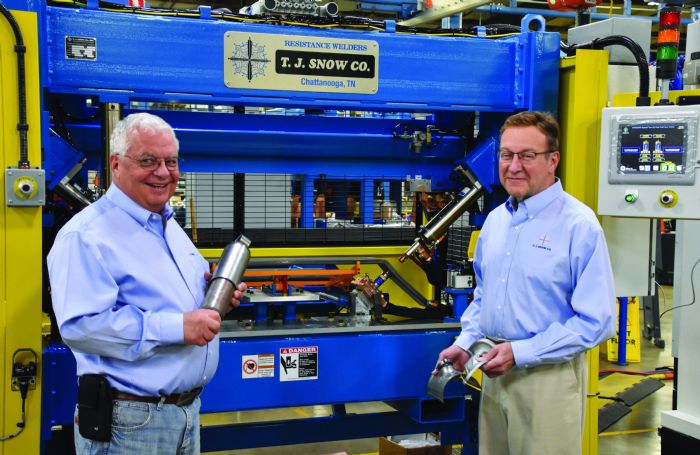 So begins Chapter III of the iconic book on the subject of resistance welding (RW), The Stanley Book on Resistance Welding, first published in 1950 and still a reliable resource for learning the basics of the RW process. T.J. Snow Co. owns the rights to the book and has it available for sale on its website. In light of the fact that automotive lightweighting initiatives have led to increased use of mixed materials, and, therefore, interest by OEMs and suppliers in using alternative joining methods, we spoke with the RW experts at T. J. Snow for their perspectives.
So begins Chapter III of the iconic book on the subject of resistance welding (RW), The Stanley Book on Resistance Welding, first published in 1950 and still a reliable resource for learning the basics of the RW process. T.J. Snow Co. owns the rights to the book and has it available for sale on its website. In light of the fact that automotive lightweighting initiatives have led to increased use of mixed materials, and, therefore, interest by OEMs and suppliers in using alternative joining methods, we spoke with the RW experts at T. J. Snow for their perspectives. 